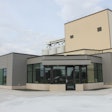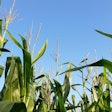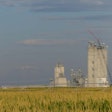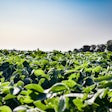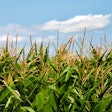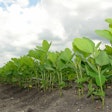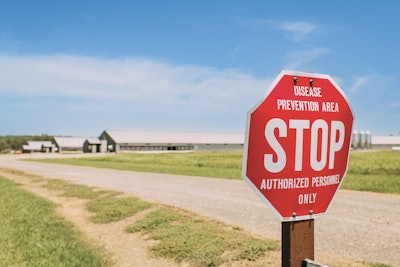
Outside of highly pathogenic avian influenza (HPAI), one of the biggest issues challenging turkey industry production is avian metapneumovirus (aMPV), also known as swollen head syndrome. The current outbreak started in 2023 and has continued into 2025.
About aMPV
aMPV is a highly contagious virus that causes respiratory and reproductive disorders in all poultry but is the most impactful in turkeys.
Birds with the virus initially present with sinusitis, resulting in nasal discharge, snicking, coughing, head shaking, caked nares as well as conjunctivitis and airsacculitis.
The virus is divided into four subgroups: A, B, C and D. While the U.S. has previously experienced outbreaks of subtype C, the more recent turkey farm outbreaks significantly impacting turkey weight and livability are caused by subtypes A or B, according to Butterball director of food safety and animal care Dr. Stephen Williams.
For turkey breeders, aMPV can produce egg production declines of 20-100% that last between two and four weeks, which is leading to a shortage of poults. In commercial turkey flocks, mortality rates can range widely, depending on the severity of the outbreak and whether a secondary infection has occurred.
Zoetis director of clinical research Dr. Kalen Cookson said that aMPV infections in younger birds often compromise the respiratory lining in the nasal cavity and sinuses, which can result in secondary respiratory diseases caused by Escherichia coli (E. coli), Ornithobacterium rhinotracheale (ORT) or Bordatella avium.
“These secondary infections are devastating as they result in significant mortality — sometimes over 50%. The secondary mortality often occurs in growout which makes it especially costly,” Cookson added.
Over the last year, aMPV has been reported in every turkey-producing state in the U.S. since outbreaks began in 2023. Unlike HPAI, there is no indemnity payout for turkey producers who lose birds to the disease, making the economic impact even more significant.
What to do when the disease is detected

Cookson explained that keeping birds in a comfortable temperature zone and maintaining proper water sanitation will minimize stress and the potential for secondary infection to occur.
“A turkey may recover from the virus within two weeks, but the virus’ impacts may extend throughout its lifetime. The disease comes with many difficulties as growers try to maintain production goals and keep impacted turkeys comfortable during the virus,” Williams added.
Because aMPV is a respiratory infection, South Dakota State University assistant professor Dr. Sunil Mor said maintaining proper ventilation and litter quality would be specifically useful to avoid serious impacts. Additionally, providing supplements of vitamins E, A and selenium could help birds withstand infection.

Biosecurity is currently the only defense
Outbreaks of HPAI have led to better, more comprehensive biosecurity measures in the turkey industry — which has most likely helped reduce the spread of aMPV, Cookson said. However, the high airborne transmissibility and infectivity of the virus makes it especially difficult to prevent, even after cleaning and disinfecting.
According to Mor, there are no specific biosecurity practices for preventing aMPV outbreaks, but all the routine biosecurity measures can be beneficial, such as restriction of unauthorized movement in turkey farms and preventing wild birds from entering the farm environment and feed stores.
Williams said that on Butterball farms, all employees are required to sanitize hands upon entering and exiting each turkey barn, disinfect footwear when entering each barn, wear farm-specific boots, disinfect equipment and vehicles when coming and going from farms and refrain from contact with backyard or pet birds.
To improve aMPV detection methods, Mor and his research team recently received a US$150,000 Rapid Outcomes from Agricultural Research (ROAR) grant to develop a diagnostic test for subgroups A and B, as well as create a challenge model to help measure the safety and efficacy of commercially available imported vaccines and new vaccines being made in the U.S.
The ROAR grant was awarded by the Foundation for Food & Agriculture Research (FFAR). The FFAR’s ROAR program rapidly funds research and outreach in response to rising or unexpected threats to the U.S. food supply or agricultural systems. SDSU matched the grant for a total investment in the research project of US$300,000.
The upcoming vaccines are needed now
Vaccination has proven to be highly effective in controlling aMPV disease by limiting viral shedding levels and minimizing respiratory tissue damage. However, Cookson said the disease will probably never be eradicated due to the number of subtypes.
Phillips added that a well-designed vaccination program that includes the use of live and inactivated vaccines will help enhance immune health.
In response to the threat of aMPV, the U.S. Department of Agriculture (USDA) authorized the importation of live aMPV vaccines for emergency use in January 2025. In anticipation of these vaccines, preparing for coarse spray administration in the hatchery is essential, Cookson explained.
“This method of day of age vaccination has not been common to the turkey industry,” Cookson said. “The first live vaccination is the foundation of a solid aMPV program, and the hatchery provides an opportunity to control that application for the best possible start.”
According to Mor, most of the upcoming vaccines being imported from Europe contain strains that are slightly different from the strains associated with current U.S. outbreaks. However, other vaccines that will be used are from native aMPV isolates. “It will be important to see effect of these imported vaccines in comparison to vaccines from native isolates,” Mor stated.
To ensure the success of vaccination, Mor recommends that the strain of the vaccine used be highly identical to the field strains circulating on farms. Additionally, subsequent boosting every four to five weeks is essential in achieving long-term protection in turkeys.
“For breeder flocks, inactivated vaccines should be applied three to four weeks before the onset of egg production and priming by two to three live attenuated vaccines is necessary to provide a high antibody response,” Mor stated.
To avoid future challenges related to aMPV, Mor suggests that vaccines be applied thoroughly on farms to avoid any unvaccinated birds, which is a primary reason for the emergence of virus subpopulations.
Mor continued: “It would be good to submit samples for diagnostic testing if there are any signs of aMPV after vaccination. The challenge with live attenuated vaccines is they may revert to virulent and cause outbreaks. It will be important to know the cause of outbreaks even after vaccination.”








